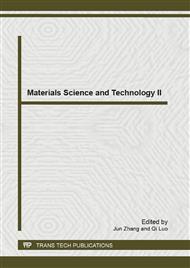p.103
p.109
p.113
p.119
p.127
p.132
p.138
p.147
p.153
Surface Charge Research of Graphene Oxide, Chemically Reduced Graphene Oxide and Thermally Exfoliated Graphene Oxide
Abstract:
In this contribution, the surface electrical properties of graphene oxide (GO), chemically reduced graphene oxide (RGO) and thermally exfoliated graphene oxide (EGO) were characterized by zeta potential. Their surface morphologies were observed by scanning electron microscope. Then they were immobilized on glass carbon electrodes and their electrochemical behaviors for different charged redox systems were also investigated by using the cyclic voltammetry (CV) method. Results indicated that the density of surface negative charge on GO is much more than those on RGO and EGO. Furthermore, the electrochemical performances of electrodes modified with GO, RGO and EGO for detecting the model analyte Cu2+ by CV were compared. The results demonstrate that negative charge on the surface of graphene materials affects their performances as electrochemical sensors significantly.
Info:
Periodical:
Pages:
127-131
Citation:
Online since:
July 2013
Authors:
Keywords:
Price:
Сopyright:
© 2013 Trans Tech Publications Ltd. All Rights Reserved
Share:
Citation:



